Unveiling the Power of Worker Safety and Social Audit

Labor Day is not just a time for celebration and a well-deserved break for workers around the world. It serves as a poignant reminder of the countless efforts and sacrifices made by the working class throughout history to secure better working conditions, fair treatment, and, above all, safety in the workplace. In today's globalized business landscape, two crucial aspects that play an instrumental role in safeguarding the rights and well-being of workers are worker safety and social audit.
Worker safety is the cornerstone upon which a healthy and productive work environment is built. It encompasses everything from ensuring proper safety equipment is provided to implementing strict safety protocols to prevent accidents and injuries. Meanwhile, social audit has emerged as a powerful tool that enables companies to objectively assess and evaluate their performance in terms of labor rights, ethical practices, and overall social responsibility towards their workforce.
Let's take a closer look at these two significant elements and understand how they are intertwined and essential for the modern workplace.
The Paramount Importance of Worker Safety
Worker safety is not just a moral imperative; it is a cornerstone of a successful and sustainable business. In workplaces across the globe, ensuring the well-being of employees should be a top priority.
From a financial perspective, prioritizing worker safety is a smart business move. Workplace accidents can lead to significant economic losses for companies. These losses come in various forms, such as compensation claims, legal fees in case of lawsuits, increased insurance premiums, and potential production disruptions. For instance, a serious industrial accident might require a company to halt operations for investigation and safety improvements, leading to missed deadlines and unhappy clients. By contrast, a safe working environment reduces the likelihood of such accidents, saving the company substantial amounts of money in the long run.
Moreover, worker safety has a direct impact on employee productivity. When workers feel safe, they can focus better on their tasks. They are not constantly worried about potential hazards in the workplace, which allows them to work more efficiently. In a safe environment, employees are also more likely to be present at work regularly. Absenteeism due to work-related injuries or illnesses can disrupt workflow and increase the workload on remaining employees. A study has shown that companies with high safety standards often experience higher productivity levels, as employees are motivated to contribute their best efforts when they feel valued and protected.
Employee satisfaction is another crucial aspect tied to worker safety. Workers who perceive their workplace as safe are more likely to be satisfied with their jobs. Satisfied employees tend to have higher morale, which in turn leads to lower turnover rates. High turnover can be costly for companies, involving expenses related to recruitment, training, and the loss of institutional knowledge. When employees stay with a company for a longer time, they become more experienced and proficient in their roles, benefiting both the individual and the organization.
Read more about worker rights and protections here.
Diving into Social Audit
A social audit is an official and systematic examination of how a company conducts itself in various aspects related to social responsibility, with a particular focus on worker safety and labor rights. It serves as a comprehensive tool for companies to measure, understand, and improve their social and ethical performance.
The primary purpose of a social audit is to evaluate a company's compliance with ethical and legal standards regarding workers. This includes aspects such as fair compensation, reasonable working hours, safe working conditions, and the absence of discrimination or harassment in the workplace. For example, a social audit can determine whether a factory is paying its workers the minimum wage required by law or if it is providing adequate protective equipment for employees working in hazardous environments.
The process of a social audit typically involves several key steps. First, there is a planning phase where the scope and objectives of the audit are defined. This includes identifying which areas of the company's operations will be audited, such as specific departments, production facilities, or supply chain segments. Next comes the data collection stage. Auditors gather information from multiple sources, including interviews with employees at all levels, reviews of company documents like payroll records and safety policies, and on-site inspections of workplaces. They may also look at external data sources, such as employee complaints filed with labor authorities or community feedback about the company's impact.
After collecting the data, auditors analyze it to identify areas of compliance and areas that need improvement. They compare the company's practices against established standards, which could be international labor standards like those set by the International Labour Organization (ILO), industry-specific best practices, or national labor laws. For instance, if an auditor discovers that a company's overtime policies do not align with legal requirements, this will be flagged as an area for improvement. Finally, a detailed report is generated. This report not only highlights the findings but also provides recommendations on how the company can enhance its social performance.
More info on International Labour Organization.
Social audits are crucial for companies as they help in building a positive corporate image. Consumers today are more aware and concerned about the ethical practices of the companies they support. A company that can demonstrate through a social audit that it takes good care of its workers is more likely to attract customers, investors, and top talent. Additionally, social audits can help companies avoid potential legal issues and reputational damage that may arise from noncompliance with labor regulations.

The Inseparable Bond between Worker Safety and Social Audit
Worker safety and social audit are intricately linked, with the latter playing a crucial role in safeguarding the former. A social audit serves as a powerful mechanism to ensure that companies are meeting the standards necessary to protect their workers.
One of the primary ways a social audit contributes to worker safety is by uncovering hidden hazards in the workplace. Through on-site inspections as part of the audit process, auditors can identify physical risks such as faulty machinery, inadequate ventilation in industrial settings, or improper storage of hazardous materials. For example, in a factory that manufactures chemicals, a social audit might reveal that the storage area for toxic substances does not have proper containment measures. Once these issues are identified, companies are urged to take corrective actions, which could involve repairing or replacing equipment, improving ventilation systems, or implementing better storage protocols. This directly leads to a safer working environment for employees.
Moreover, social audits also examine a company's safety policies and procedures. They assess whether a company has comprehensive safety guidelines in place, if these guidelines are being effectively communicated to employees, and if employees are receiving proper safety training. A lack of clear safety policies can leave workers confused about how to protect themselves on the job. For instance, in a construction company, if there are no well-defined procedures for handling heavy machinery or working at heights, workers are at a much higher risk of accidents. Social audits can prompt companies to develop and enforce these policies and to ensure that employees are well-informed and trained. This not only reduces the likelihood of accidents but also equips workers with the knowledge and skills to respond appropriately in case of an emergency.
Social audits also hold companies accountable for worker safety. When the results of a social audit are made public or shared with stakeholders such as investors, customers, and labor unions, companies have a strong incentive to improve their safety records. Poor safety performance revealed in a social audit can damage a company's reputation, leading to a loss of business or a decrease in investor confidence. In contrast, a good safety record demonstrated through a social audit can enhance a company's standing in the market. This external pressure from social audits encourages companies to continuously invest in worker safety, whether it's through upgrading safety equipment, providing more in-depth training, or improving overall safety management systems.
Challenges on the Path
Despite the clear importance of worker safety and the role of social audits, several challenges impede their full realization in many workplaces.
One significant challenge is the lack of awareness and commitment among some companies. For smaller enterprises, in particular, the focus may be primarily on short-term economic survival. They might view investments in worker safety, such as purchasing new safety equipment or conducting regular safety training, as additional costs that they can ill afford. These companies may not fully understand the long-term benefits of a safe workplace in terms of reduced costs and increased productivity. Similarly, some companies may be hesitant to undergo social audits. They may fear that the audits will uncover issues that could damage their reputation or lead to regulatory scrutiny. This lack of cooperation can prevent the identification and resolution of worker safety problems.
The cost associated with implementing safety measures and conducting social audits is another major hurdle. For companies operating on tight budgets, especially those in highly competitive industries with narrow profit margins, the expenses related to improving safety can be substantial. For example, retrofitting an old factory to meet modern safety standards might require significant capital investment for structural changes, ventilation upgrades, and the installation of safety-monitoring systems. Social audits also come with costs, including hiring external auditors, allocating internal resources for data collection and preparation, and addressing the findings of the audit. These financial constraints can make it difficult for some companies to prioritize worker safety and social audit initiatives.
In addition, the complexity of global supply chains poses unique challenges. Many companies source materials and products from multiple suppliers across different countries, each with its own set of labor laws and safety standards. Ensuring consistent worker safety throughout the supply chain becomes a daunting task. A company may have high-standard safety practices in its own operations but struggle to monitor and enforce the same standards among its suppliers. Social audits in such complex supply chains are also more difficult to coordinate and conduct effectively. Auditors may face language barriers, cultural differences, and limited access to information when trying to assess the working conditions of suppliers in foreign locations.
Another obstacle is the resistance from some employees to changes in safety procedures or participation in social audits. In some cases, workers may be accustomed to old-fashioned ways of working and may resist new safety regulations or training programs. They may perceive these changes as an inconvenience or as an indication that their existing work practices are being criticized. Additionally, employees may be reluctant to provide honest feedback during social audits, fearing retaliation from their employers. This lack of employee cooperation can undermine the effectiveness of both safety improvement efforts and social audits.
At Testcoo, we understand these challenges and are here to help. Our comprehensive services are designed to assist companies in navigating the complex landscape of worker safety and social audit. We offer tailored safety consulting services, helping businesses of all sizes identify potential hazards in their workplaces and develop cost-effective solutions to mitigate them. Our team of experienced auditors can conduct in-depth social audits, providing detailed and actionable reports that not only highlight areas for improvement but also offer practical strategies for implementing positive changes. With our support, companies can enhance their safety records, improve their social performance, and build a more sustainable and prosperous future.

How to Conduct a Social Audit: A Step-by-Step Guide
A social audit evaluates a company's operations and suppliers to ensure compliance with social, ethical, and labor standards. It helps identify risks, improve working conditions, and build trust with stakeholders.
Whether you're a brand, supplier, or third-party inspection provider, here’s a step-by-step guide on how to conduct a comprehensive social audit:
1. Define the Scope and Objectives
Before launching the audit, clearly define:
- Which sites or suppliers will be audited
- What standards or codes of conduct to follow (e.g., SA8000, SMETA, amfori BSCI, WRAP, or a buyer’s own Code of Conduct)
- Key focus areas: labor practices, health and safety, working hours, wages, discrimination, child labor, environmental compliance, etc.
This helps create a targeted audit plan and ensures alignment with your company’s CSR goals or client expectations.
2. Select an Audit Team or Third-Party Auditor
Choose qualified auditors who are:
- Trained in social compliance standards
- Fluent in local languages and familiar with local labor laws
- Independent and objective (especially important for third-party audits)
Using an experienced audit firm ensures accuracy, consistency, and credibility.
3. Prepare the Facility
Notify the facility in advance if it’s a scheduled audit (unless it’s unannounced). The facility should prepare:
- Employee records (e.g., payroll, contracts, age verification)
- Health and safety documentation
- Proof of licenses and permits
- Employee representatives for interviews
If it's an unannounced audit, auditors arrive without prior notice to get an accurate picture of daily practices.
4. Conduct the Opening Meeting
The audit begins with an opening meeting with management. This includes:
- Introducing the audit team
- Explaining the audit scope and process
- Discussing confidentiality and expectations
Transparency at this stage helps build trust and cooperation.
5. Facility Tour and Observation
The auditors will conduct a physical walkthrough of the facility to inspect:
- Fire safety equipment and evacuation plans
- Machinery safety and personal protective equipment (PPE)
- Cleanliness, ventilation, lighting
- Dormitories, canteens, and sanitation facilities
They take note of potential safety hazards or signs of non-compliance.
6. Review of Documents and Records
Auditors examine documents such as:
- Timecards and wage records
- Employment contracts
- Proof of age documents
- Accident logs and disciplinary records
They check for inconsistencies in working hours, wage payments, social insurance contributions, and more.
7. Worker Interviews
Confidential worker interviews are a key part of the social audit. These can be one-on-one or in small groups. The goal is to understand:
- Actual working conditions
- Wages and hours
- Treatment by supervisors
- Freedom of association
- Issues of harassment or discrimination
Workers are assured anonymity to encourage honest feedback.
8. Conduct the Closing Meeting
At the end of the audit, a closing meeting is held to:
- Share preliminary findings
- Discuss any major non-compliances or violations
- Allow the facility to respond or clarify
- Outline the next steps (e.g., Corrective Action Plan)
It’s important to keep the tone collaborative and constructive.
9. Report and Corrective Action Plan (CAP)
A detailed social audit report is issued, including:
- Compliance summary
- Identified non-compliances (major, minor, observations)
- Photographic evidence (if applicable)
- Recommendations
A Corrective Action Plan (CAP) is developed, outlining:
- The issues to be fixed
- Deadlines for resolution
- Evidence needed for closure (e.g., photos, new policies, training records)
10. Follow-up and Continuous Improvement
Depending on the audit findings, follow-up actions may include:
- Desktop review of evidence
- Re-audit to verify compliance
- Ongoing support and training
The goal of a social audit isn’t just compliance—it’s long-term improvement in workplace conditions and corporate responsibility.
Our Solution
At Testcoo, we are committed to being your reliable partner in enhancing worker safety and conducting comprehensive social audits.
Our platform offers a suite of services designed to meet the diverse needs of businesses. For worker safety, we start with a detailed workplace assessment. Our team of safety experts, armed with in-depth knowledge of industry-specific safety regulations and best practices, conducts thorough on-site inspections. They use advanced tools and techniques to identify even the most subtle safety hazards, whether it's in a manufacturing plant, an office building, or a service-based workplace. After the assessment, we provide customized safety improvement plans. These plans are not one-size-fits-all; instead, they are tailored to the unique characteristics of each business, taking into account factors such as the type of operations, the layout of the workplace, and the skills and experience of the workforce.
When it comes to social audits, we pride ourselves on our professionalism and thoroughness. Our social audit process begins with a comprehensive planning phase, where we work closely with you to define the scope and objectives of the audit. We understand that every company has different priorities and areas of focus, and we ensure that the audit aligns with your specific goals. During the data collection stage, we use a multifaceted approach. In addition to traditional methods like interviews and document reviews, we also leverage technology to gather data efficiently. For example, we may use digital survey tools to reach a wider range of employees, ensuring that their voices are heard, especially in large-scale or geographically dispersed organizations.
Our audit reports are not just a list of findings; they are actionable roadmaps for improvement. Each report includes clear, step-by-step recommendations on how to address the identified issues. We also offer follow-up support to help you implement these changes effectively. Our team is available to answer any questions, provide additional guidance, and monitor the progress of your improvement initiatives.
Whether you're a small- to medium-sized enterprise looking to establish basic safety and social responsibility practices or a large multinational corporation aiming to enhance your existing programs, Testcoo has the expertise and resources to support you. Contact us today and take the first step towards a safer, more socially responsible workplace.
Free Sample Report Performance Quality Control
Download a sample report to keep control of your supply chain!
Featured Articles
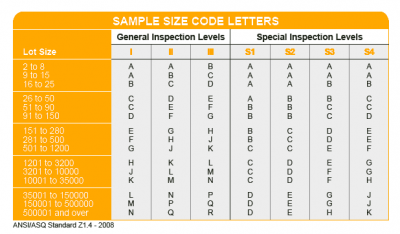 AQL Table | How to Read It
AQL Table | How to Read It TOP 10 Common Defects in Garments Quality Inspection
TOP 10 Common Defects in Garments Quality Inspection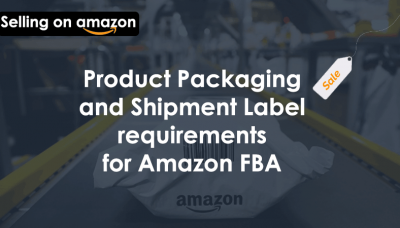 Product Packaging and Shipment Label requirements for Amazon FBA
Product Packaging and Shipment Label requirements for Amazon FBA What Is ASTM-F2413-18? Protective Footwear Standard
What Is ASTM-F2413-18? Protective Footwear Standard How to Conduct Third-Party Quality Control Inspections for Electric Scooters
How to Conduct Third-Party Quality Control Inspections for Electric Scooters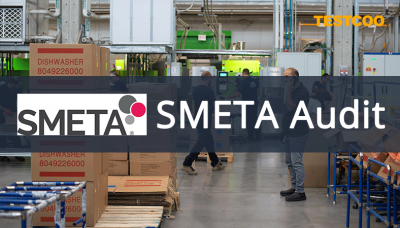 SMETA Audit-What is SMETA Audit?
SMETA Audit-What is SMETA Audit?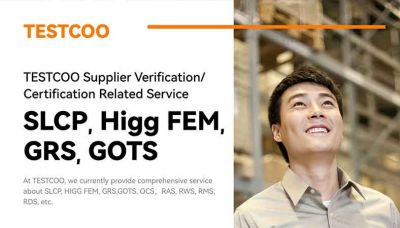 TESTCOO Supplier Verification/Certification Service SLCP, Higg FEM, GRS, GOTS
TESTCOO Supplier Verification/Certification Service SLCP, Higg FEM, GRS, GOTS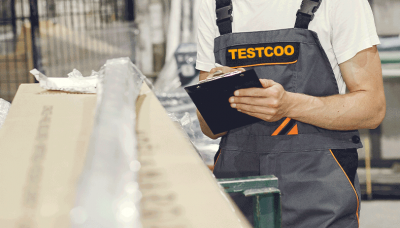 Quality Control Inspection Company in China
Quality Control Inspection Company in China What is Quality Inspection? A Complete Guide
What is Quality Inspection? A Complete Guide Guidelines for Product Inspection in India
Guidelines for Product Inspection in India
Category
- Production Inspection Service
- Factory Audit
- Softline Inspection
- Hardline Inspection
- Electrics Inspection
- Certification
- Checklist
- Manufacturers
- Quality Assurance Basics
- Products Recall
- AQL
- Guidence and Standard
- News
- Supplier Management
- Amazon
- Protective Equipment
- e-commerce quality control
- Indian Manufacturing
- Soft Goods Quality Control
- Supply Chain Management
- Supply Chain Resilience
- E-Commerce Quality Control
- ISO 2859
- Supply Chain Optimization
- Garment Industry
- Higg Index




